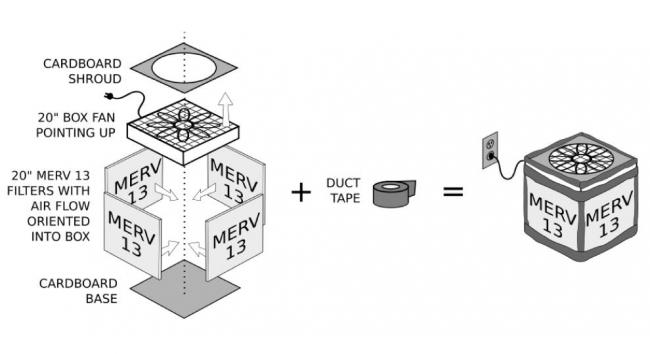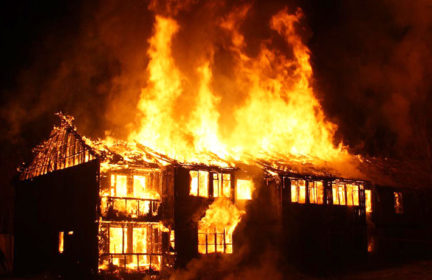DIY air filter protects an entire room from COVID-19
Will this pandemic ever end? We finally have vaccines, and we still have breakthrough infections. We finally reach herd immunity from vaccination, then a new variant is 50% more infectious and brings the pandemic roaring back. We’re not even recovered from that when another variant comes along, even more infectious and a bit resistant to vaccines. At this point we need 150% of people vaccinated to reach herd immunity again, and 6 months after that another variant will set us back to the beginning.
The problem is that we’re relying too much on vaccines. They’re a great tool, but just not enough on their own. That’s why we need a layered approach.
Every COVID precaution has some failure rate or side effect that prevents it from being the magic bullet that fixes everything. That’s okay. We can make up for this by using several layers of protection. If one layer fails 20% of the time (vaccine) and another layer fails 20% of the time (N95 mask) then you can combine both precautions for a failure rate of only 4% (odds that both fail at the same time). If that’s still not enough, just add a third layer.
Here’s one more layer you can add, either for added protection or as a replacement when, for whatever reason, you can’t wear that mask.
One of the most overlooked precautions is also the easiest to keep up long term. The virus can only spread if you breathe it in. Cheap and effective ventilation systems remove viruses from the air, so that you can safely breathe that air without getting infected. With enough room air filtration, it becomes possible for people to share a room together without spreading infection, even if none of them are wearing masks. This is especially important for places where people need to remove their masks, such as dental offices or restaurants. It also makes a great backup layer for especially high risk environments, like classrooms or shared offices, where it’s difficult to wear a mask properly for many hours at a time.
Just build one of these filtration systems for each place that you want to protect. One unit is enough to hang out with friends, especially if you spread out a little with the fan placed between you pointed up. Three of them will provide supplemental protection for a typical, crowded classroom, in which everyone is still wearing masks.
The best part about layered defenses is that you can always afford to drop one of the layers, and the remaining layers will still take care of you. A filtration system is just one more layer you can use, so that you can safely drop any other layer if it’s getting in your way.
There’s a whole menu of layers that you can choose from:
- Filtration System – keep the above air filter near you
- Outdoors – because the ventilation is built-in
- N95 Masks – for when you need to visit areas that you haven’t secured
- Vaccines – 5 months of easy protection
- Distance – just stand further away while talking
(BTW, hand washing and scrubbing doorknobs don’t belong on this list. They might help a little bit, but not nearly as much as any of the above. COVID-19 usually spreads through the air, not by touching surfaces.)
I always aim for at least two layers of protection, and sometimes add a third if I need to be in a crowded room. Decide how many you feel comfortable with – you definitely don’t need to use all at once.
And the best part about filtration systems? If one business owner installs filtration, every single customer is that much safer and doesn’t need to work so hard on protecting themselves. Bring your own filter, or ask your favorite businesses to take care of it for you. You and everyone around you will be that much safer.
Imagine if all of our public spaces had good ventilation. Everyone would be protected, even those that refuse to protect themselves. We might finally end this pandemic.
Until then, this is one more tool that you can use to protect yourself and your community.
-
Comments (39)
-


